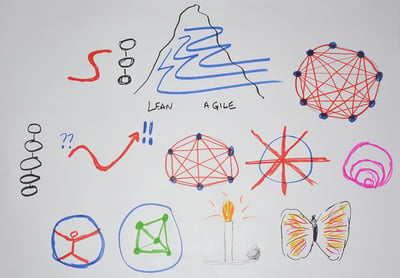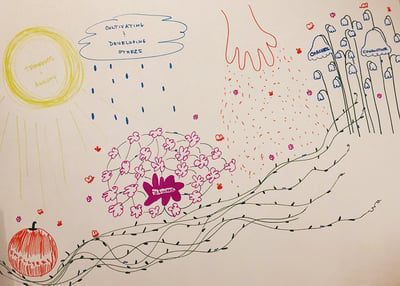Published on: Aug 1, 2018
Topics: Agility, transformation, Journey
Be it Agile Transformation, DevOps Transformation or Digital Transformation, it always calls for change. Any change process starts with the awareness that there’s a burning issue to be resolved within the organization such that a tipping point is reached. Change does not come easy and it is not the same for all. When we speak about enterprise transformation, we need to be well aware of the underlying tech disruption. Please find more details on this at Singularity University.
Based on the specific change that is in focus, the plan and strategy can vary. However, certain guiding principles still remain the same and in this
Step 1 - Reasons driving the need for transformation
Usually, transformation projects are triggered when the leadership
Specific (simple, sensible, significant)
Measurable (meaningful, motivating)
Achievable (agreed, attainable)
Relevant (reasonable, realistic and resourced, results-based)
Bring on board coaches and leaders with experience in

Agile methodologies have redefined how we perceive organization transformation
Step 3 - Connect at all levels
It is not a rare occurrence to see
Step 4 - Decentralised decision making
Barring some strategic and long-term decisions,
While one may be tempted to conclude that leaders are unwilling to surrender their authority to others, some of the evidence suggests that, at times, even the employees themselves may be reluctant to step up and assume their roles as leaders.
Step 5 - Promote innovation - experiment and reiterate
Experimentation and iteration are the most common responses to digital disruption. However, this alone is not enough, we need to use the results of those experiment hypothesis —successes and failures—to drive change across the organization. Just by allocating resources to transformation projects will not lead to continuous and actionable learning in the way that short learning cycles experimentation does. Instead, we should figure out how to experiment to compete in the future while also maintaining the core business so that it can perform in the present.
Sep 6 - Continuously fill the skills gap
This originates from the team level where the team members report the need to continually develop their skills but they get little to no support from their organization to do so. Most of the companies make it a part of their KPI to update their associates' skills at least yearly, but the real need is to update skills continuously on an ongoing basis which is driven from the actual skills gap. Many organizations continue to rely solely on formal training to

Continuous, on-the-job training facilitates sustainable transformation
Success motivates more success. Break down the change into smaller goals which allow “quick wins” and celebrate these small victories such that the entire
Ultimately, please be careful and don't declare victory too early. After each win, assess what worked and what needs improvement. Increase buy-in and momentum by expanding the leadership team and by reallocating the associated periodically. This will help build resilience, reduce individual dependencies and percolate the changes and winning culture throughout the organization.
Finally, please remember that organizations are not machines, they are communities of people; you need to cultivate an ecosystem of people conducive to the change.
The role of an Agile Coach is critical in facilitating a successful and sustainable Agile transformation for any organization. Change Agents must bring to the table a deep understanding of Agile principles and practices, in addition to being able to coach team members and enable a collaborative effort. You can gain great insights into the role of an Agile Coach from the team of SPC4 consultants at Temenos+Agility.